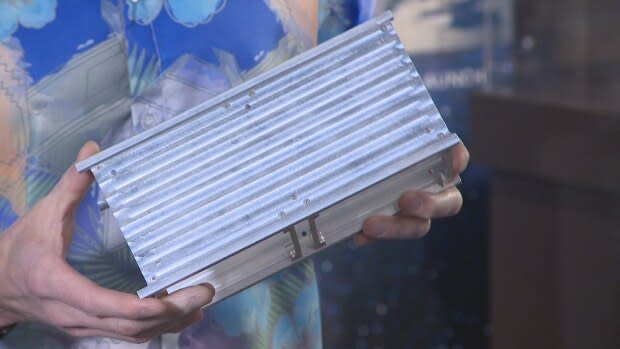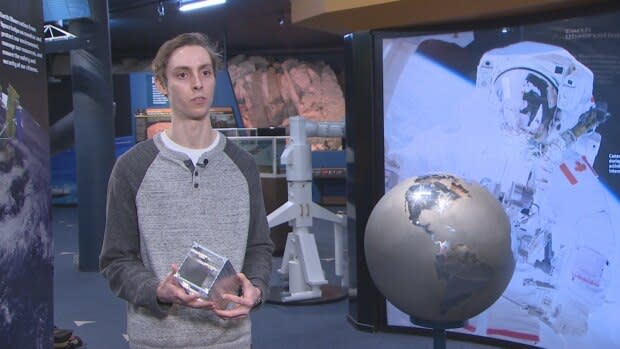MUN's student-built space satellite to launch in 2022
A pint-sized satellite made by students at Memorial University will travel around the earth starting in 2022.
The Killick-1, built by students in Memorial University's faculty of engineering, will measure information coming from the ocean. The satellite will be launched 400 kilometres up into space, where it will measure things like sea ice and waves.
Desmond Power, vice president of remote sensing at C-Core — a research advisory company based out of St. John's — says the satellite will serve as a great help to the province's fishing and oil industries.
"In terms of the oil and gas industry ... sea ice is important because we need to be able to understand where it is, so that if a tanker wants to transit through there they have no trouble," Power said.
It's also essential for search and rescue operations, he said. "If there's an incident on a rig for instance, you need to be able to get people off the rig. And of course for fisheries, you really need to know where the ice is."
The satellite is only 20 centimetres long, measuring in at about the size of a one-litre carton of milk.
Its guts include a communications system, attitude control to keep the satellite upright, a small but powerful computer, thermal controls and a transmitter.
The satellite will be attached to a rocket in 2022 and launched into orbit from the International Space Station.
Power credits the size of the device to the advancement of cell phone technology.
"You think of all the things that get jammed into a cell phone ... it's really that kind of technology that's made these types of satellites possible," Power said.

Grad student Benjamin Dowden is the mechanical lead for the project, and has been with it since day one.
"It's really something to think that we can fit so much together in this," Dowden said. "Especially doing something like picking up GPS signals and all the processing power, we need to be fully self contained and have our own battery, power system and controls."
Over time, the team working on the satellite has grown from six students to close to 30.
The team secured funding from the Canadian Space Agency, as well as $200,000 from the province. Its size, according to Power, means lower costs than sending a traditional, far bulkier satellite into orbit.
"Traditional satellites cost tens and hundreds of millions of dollars," Power said.

"Probably a total cost of launching this is about half a million dollars. So if you were to be able to produce this in mass, you could launch dozens and hundreds of these satellites.
The difference between having one satellite in space and having hundreds?
"You can have your eye on the entire world at once," he said.
"That's extremely important, because it gives us a complete picture of the ground all the time."
By the time the satellite launches, Power estimates about 120 students will have had a hand in the project -- boosting their marketable skills in the space field.
"A lot of times, the students just come fresh out of university and have to get the training," Power said. "If they have the training already, that's huge."
Read more from CBC Newfoundland and Labrador


